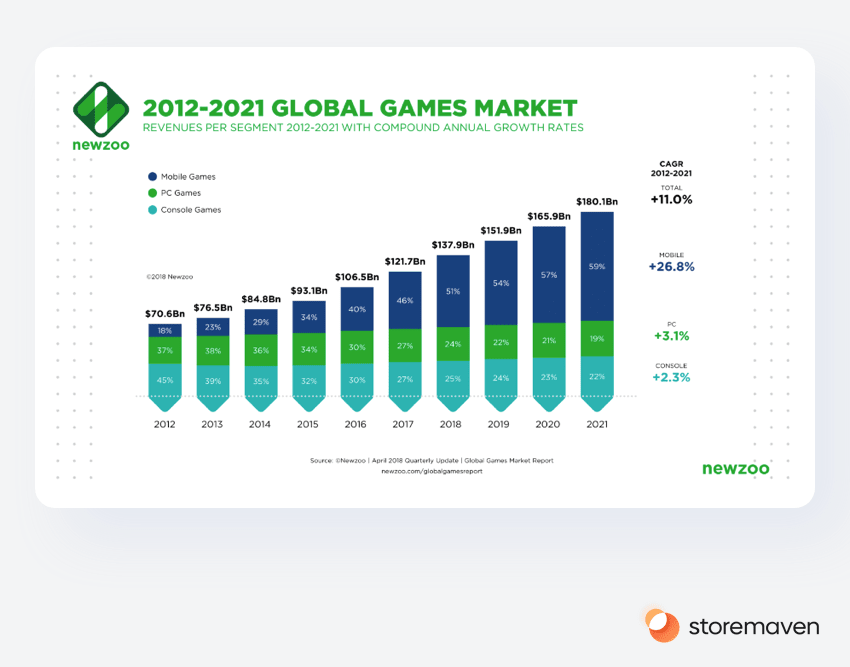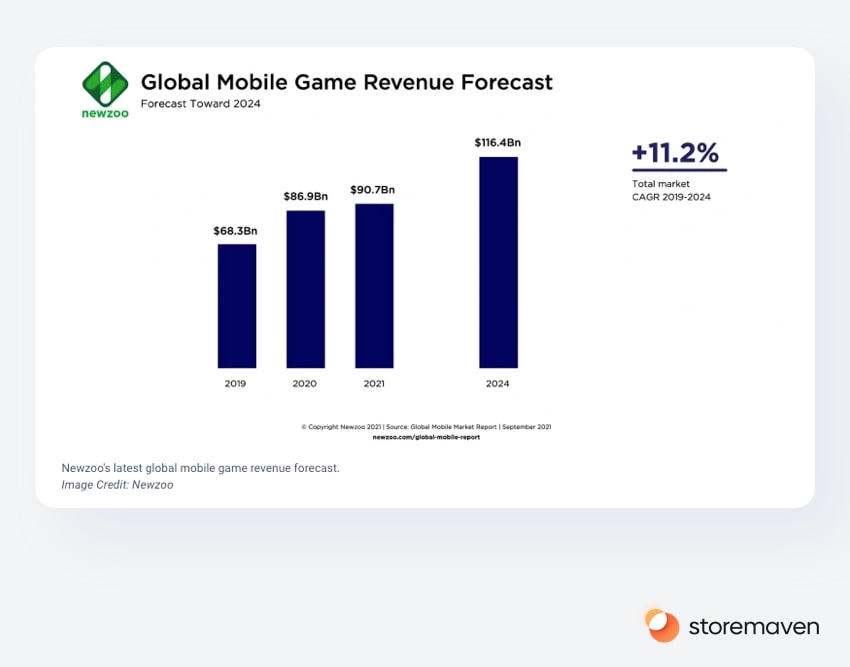In the coming weeks, months, and years, Storemaven, now an official part of the Zynga/T2 family, will decode everything it takes to create and scale great mobile games, mobile game marketing and everything in between, based on the expertise of some of the brightest minds in mobile gaming.
We will cover, in-depth and every step of the way, the right methodologies, strategies, and the technology needed for you to succeed, be it if you work in mobile marketing, data science, UA, product marketing, monetization, and more. Whether you’re into mobile game developing or just have an exciting mobile game idea, we’ve got all the knowledge you need to make your gaming dream a reality.
This is going to be the only source in the world that is actually based on content from the people in the business of mobile games.
But first things first, you can already set the cornerstones of every successful work that was done behind a hit mobile game. Bear with me on this short but important piece, meant to remind you that developing a successful mobile game requires three key elements.
What makes a good mobile game? Like in most aspects of our business, having the right methodologies and tech in place will allow you to significantly improve the probability of your game hitting scale. Let’s dig in.
3 Key Elements to Building Mobile Games
The business of mobile games has changed dramatically in the past couple of years.
We saw a huge increase in demand for mobile games throughout the COVID era (remember those lockdown days?) that sent people in droves to consume more entertainment, and the almost crippling effect of Apple deciding to deprecate access to user-level data for advertising and measurement purposes.

But that increase in demand created a tough comparable when calculating year on year success, which produced the apparent impression of slower growth in the games market (although it’s still significantly higher than the pre-COVID era).

In a nutshell, it became significantly harder to scale a game and find a massive audience that likes and engages with it over time. An engaged audience is the oxygen of every game and without it, it’s near-on impossible to find commercial success.
It was always hard to develop great mobile games and create a product that could find global success. But in the past two years, even if you got that incredibly hard part right, scaling a mobile game became just as difficult.
Here are the main challenges I see every mobile games company having to deal with in order to find success in the next few years.
1. Increase the strike rate of new game development
Creating successful games requires more than just a great mobile game idea. Let’s think about this mathematically, bearing in mind that these numbers are just for the sake of this exercise.
Let’s say the probability of creating a fun, successful mobile game people want to play was 10%, and the probability of actually scaling that game profitably (acquiring a massive audience for a CAC that’s lower than the actual LTV) was 30%. It means the “strike rate” (the rate in which a developer was able to create a mobile game hit that generated significant revenues) was 10% X 30%, which is 3%.
One out of 33 projects resulted in a successful game.
These days though, the probability of scaling the game profitably is way lower. 30%? A dream number. If we assume it’s twice as hard to acquire quality users (which I think is quite optimistic), and the probability to scale is now 15%, the strike win is currently 1.5%.
This means that only one out of 66 projects would result in a successful game.
The numbers don’t really matter here, and each studio and developer has its own expertise, experience and know-how that governs their own strike rate. But the dynamic is definitely real.
Let me quote Take-Two Interactive CEO, Strauss Zelenick from a recent interview when asked about recent trends:
“…well the trend that has the most potential unfortunately is an ancient one, is creating new hits that are unexpected that are spectacular that excite people and engage people and brighten their day. That’s what the entertainment business has always done well, companies that do that well are the ones that succeed and the ones that don’t do that well are the ones that don’t succeed.”
2. Increase the probability of successful new game development
When attempting mobile game development, there needs to be a combination of concept and design as well as solid data. Not only will this provide you with a well rounded perspective on your potential new product but it will also give you confidence in your mobile game idea before investing more time and resources.
By leveraging a great greenlight process early on in the concept phase, you can reduce significant development risk.
There are many ways to do that within the mobile game space today, including concept testing to gauge interest in a concept early from real-world users and in a real-world environment. Then extensive marketability testing and of course, having access to data-driven intelligence about current market trends.
That means understanding the game’s concept business potential early on, its user acquisition economics, and the potential that you’ll be able to turn a high enough LTV while having a low enough CPI to sustain profitable growth of the game.
Even when in the concept phase you need to rely on past data as well as competitive intelligence to estimate the potential LTV of a game (that does not exist yet), you can extensively test the appetite potential players have for such a game through concept testing.
Concept testing will allow you to estimate if the potential CPIs for your concept are even in the ballpark that would allow for profitable player acquisition.
3. Successfully market your mobile game
So you have a great, fun, and engaging game in your hands, congrats. You now need to scale it and put it in the hands of, hopefully, millions of engaged players. Correctly marketing a mobile game could lead to customer retention and brand awareness later down the line, so it’s important to consider an effective strategy that is relevant to your game business.
To do that, you need to:
- Deploy a pragmatic framework of how to combine paid and organic user acquisition efforts to maximize growth.
- Use the right publishing technology to contextually target the right audience, optimize your funnel creatives (both on the ad creative side, as well as the App Store product page creative side), have the right tools to measure the effectiveness of different paid UA channels and campaigns, as well as different organic efforts, so you can allocate your budget effectively. This involves attribution that actually works post-privacy, media-mix modeling, and more.
- Implement the right set of tools and tech to engage users, to maximize retention, and run a great LiveOps operation and VIP operation for your live game.
- Have an always-on experimentation framework in-game to optimize and increase players’ LTV through smart, well-managed and measured a/b tests and experiments from the FTUE, to different game mechanics.
- If you’re monetizing your game through in-app ads, leverage the latest technologies, such as mediation, to maximize the eCPMs you can earn on your ad inventory.
Appropriately marketing mobile games is a key element to having a successful game launch and to increase the longevity of your product with players. So many great and fun games sadly found their way to the bottom of the charts to be abandoned forever because the studio behind them didn’t put the right people, expertise, and technology on the publishing side.
If you do have the right methodologies and technology in place, you can significantly improve the probability of your game hitting scale.
Stay tuned for more, and subscribe to our bi-weekly newsletter below, in order to stay ahead of the curve and on top of your craft.












